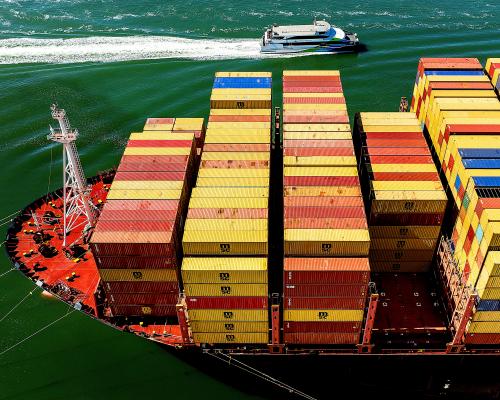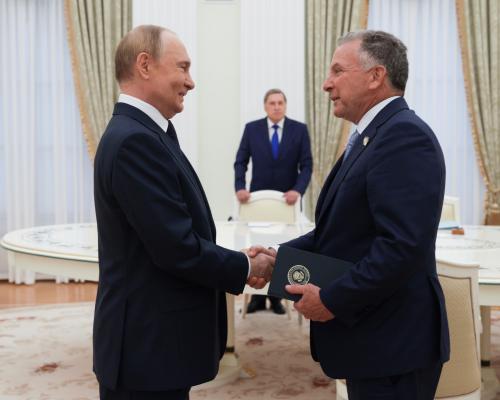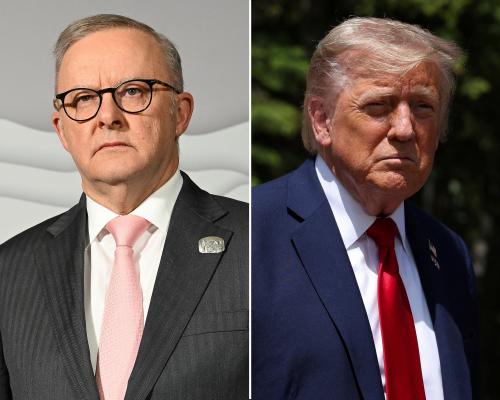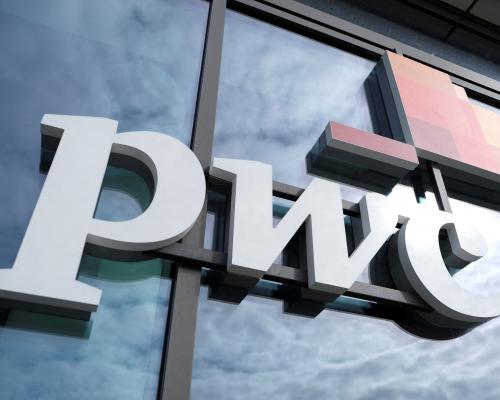
Donald Trump said he would impose a 100% tariff on foreign computer chips, likely raising the cost of electronics, autos, household appliances and other goods deemed essential for the digital age.
“We’ll be putting a tariff on of approximately 100% on chips and semiconductors,” Trump said in the Oval Office while meeting with Apple CEO Tim Cook. “But if you’re building in the United States of America, there’s no charge.”
The Republican president said companies that make computer chips in the US would be spared the import tax. During the Covid-19 pandemic, a shortage of computer chips increased the price of autos and contributed to an overall uptick in inflation.
Trump and Cook were meeting on Wednesday to discuss an agreement for Apple to invest $100bn in manufacturing in the US over the next four years. That comes after the iPhone maker already pledged to invest $500bn domestically earlier this year. With Apple’s new investment, the total figure is now at $600bn.
Apple has been propped up as an example of a tech company that’s based in the US but conducts much of its manufacturing abroad. The vast majority of Apple’s products are made in China, for example, with about 90% of iPhones assembled there. Cook has met with Trump several times since the president took office to discuss more manufacturing in the US.
The world’s largest contract maker of chips, Taiwan Semiconductor Manufacturing Company (TSMC), was “exempt” from the tariff, an official told a parliamentary briefing in Taipei on Thursday. South Korea’s top trade envoy Yeo Han-koo said that Samsung Electronics and SK Hynix would also not be subject to the 100% levy.
Nvidia, one of the largest chip makers in the US, would likely be exempt from the tariff because the company has manufacturing facilities in the US. Inquiries sent to Nvidia and chip maker Intel were not immediately answered.
However, the plan could be harm other countries in Asia, with the president of the Philippine semiconductor industry, Dan Lachica, saying that with around 70% of the country’s exports being semiconductors, the new rules would be “devastating”.
Demand for computer chips has been climbing worldwide, with sales increasing 19.6% in the year-ended in June, according to the World Semiconductor Trade Statistics organization.
Trump’s tariff threats mark a significant break from existing plans to revive computer chip production in the United States. He is choosing an approach that favors the proverbial stick over carrots in order to incentivize more production. Essentially, the president is betting that higher chip costs would force most companies to open factories domestically, despite the risk that tariffs could squeeze corporate profits and push up prices for mobile phones, TVs and refrigerators.
By contrast, the bipartisan Chips and Science Act signed into law in 2022 by Joe Biden provided more than $50bn to support new computer chip plants, fund research and train workers for the industry. The mix of funding support, tax credits and other financial incentives were meant to draw in private investment, a strategy that Trump has vocally opposed.
Trump’s new 100% tariff on foreign computer chips is set to be officially announced next week and is expected to apply to all countries and companies.







